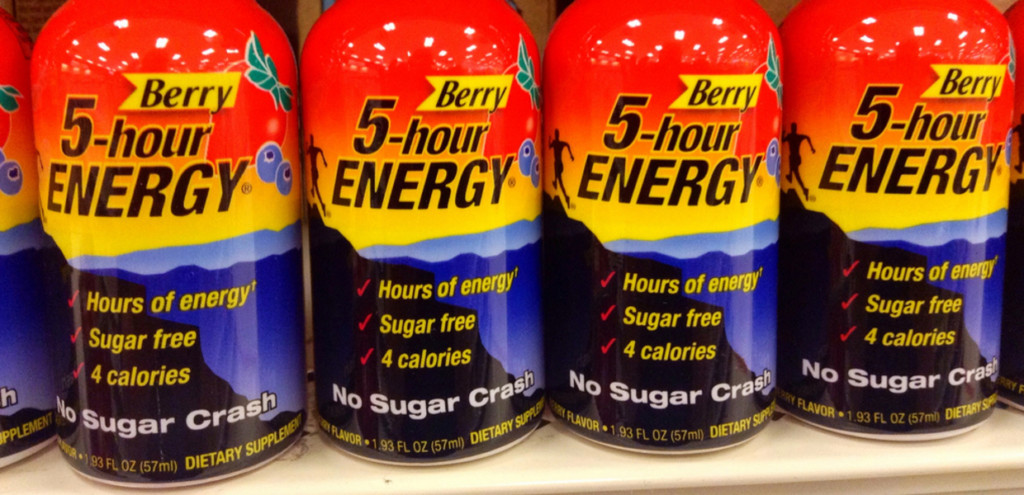
Have you noticed the increasing number of options there are at gas stations around Montgomery of what is typically branded as “5-Hour Energy shots?” You can now find products like Viva Zen, K Chill and Vita Lize that are packaged in the same bottle with different labels at almost any convenience store throughout the city. The ingredient in these products that has them flying off the shelves and creating controversy is Mitragynine Speciosa, which is found in the Kratom plant. Kratom grows naturally in Southeast Asia and is a part of the coffee family. It has been used in traditional South Eastern medicine systems for at least several hundred years of written recorded history.
When ingested in small doses, Kratom creates a stimulating and energizing effect similar to drinking a cup of coffee. In slightly larger doses, the plant can provide minor pain relief and improved mood along with its stimulating effects. The products sold at convenience stores cost around $6 and are intended to produce all of these effects to the consumer. Alkaloids in the Kratom plant act on the same part of the brain as prescription opiate painkillers and heroin, the opioid receptors.
The cause for concern surrounding Kratom in Alabama and other states stems from this similarity to the action of opiates and its potential for addiction problems. However, many supporters of the plant claim that it can be used as a safer and far less physically addictive alternative to prescription opiate medications.
Researchers in the Unites States are studying the plants ability to wean addicts of painkillers, heroin and even cocaine. Drugs like suboxone and methadone are currently are currently used to treat opioid addiction. These drugs have been a godsend for many addicts. However, drugs like suboxone and methadone produce intense withdrawal symptoms upon cessation of treatment. These opioid replacement drugs can produce withdrawal symptoms that are equally excruciating as the ones produced from the opiates that they are made to treat. This causes many addicts to relapse once the drug replacement treatment is completed.
Edward Boyer, the Director of Medical Toxicology at the University of Massachusetts Medical School and Chris McCurdy, a professor of medicinal chemistry and pharmacology at the University of Mississippi studied Kratoms potential for addiction treatment in depth. They studied a man who was injecting a large dose of a powerful opiate similar to morphine several time a day and was trying to stop. Boyer and McCurdy found that Kratom helped to alleviate the process of opioid withdrawal “awfully, awfully well.” After they had successfully rid the subjects system of opioids they stopped administering the Kratom to him. What they found was that the subject did not suffer from withdrawal symptoms other than a slightly runny nose.
SB226 and HB175 are both active bills in the Alabama legislature that would add Kratom to the list of Schedule 1 controlled substances along with drugs like heroin and cocaine. This would make the sale and possession of any form of Kratom a felony in the state as well as prohibit any further research to be done on the plant. On Feb. 24 the Alabama Senate Judiciary Committee voted 8 to 1 in favor of SB226. Among the testimony in favor of keeping Kratom off the controlled substance list was Neil Sharpton. As many veterans, Sharpton, an Army Ranger who served in Iraq, suffered from post traumatic stress disorders. He uses Kratom as an alternative to the multitude of medications prescribed to him by the Veteran Affairs hospital to cope with PTSD. Botanical Defense, an organization that was allowed to send a representative to speak as an opponent of the bill, stated on its site that Sharpton was interrupted during his testimony. Before reaching the governor’s desk to take effect, the bill is pending a vote from the House Judicial Committee.
Hundreds of stories similar to Sharpton’s can be read on http://www.americankratom.org/success_stories, a website designed for advocates of the plant to organize and those who are unfamiliar with it to learn about its effects and history. These success stories include chronic pain patients who choose to use Kratom instead of opioid medications, addicts using it as a form of heroin replacement therapy and others like Sharpton who benefit from the plant in regards to their mental health.
I write this without the intention of persuading students in one direction or another on this issue. However, at a time when rates of abuse, addiction and overdose from prescription opiates and heroin are at an all-time high, I believe that it is our civic duty as young adults to educate ourselves on Kratom and organize to influence our lawmakers in whichever way that is believed to be beneficial for our society.
By Turner Griffin




